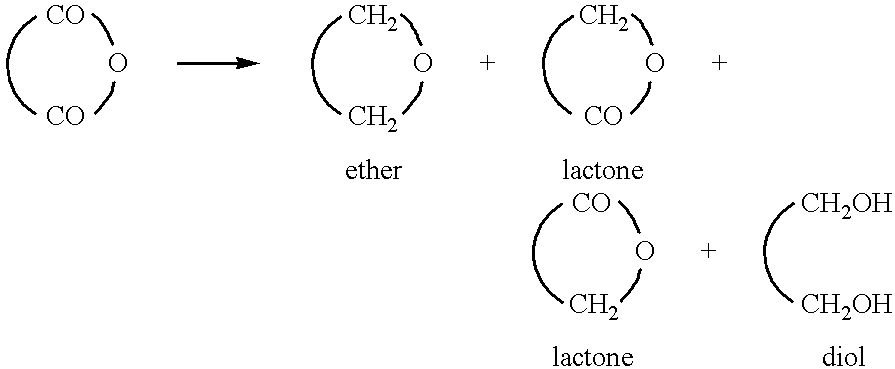Metal raney catalysts and preparation of hydrogenated compounds therewith
a technology of metal raney catalysts and hydrogenated compounds, which is applied in the direction of physical/chemical process catalysts, organic chemistry, chemistry apparatus and processes, etc., can solve the problems of not revealing the effectiveness of raney ruthenium catalysts for hydrogenation reactions, severe reaction conditions used in this method, and unsatisfactory reaction conditions, etc., to achieve the effect of increasing the catalyst performan
- Summary
- Abstract
- Description
- Claims
- Application Information
AI Technical Summary
Benefits of technology
Problems solved by technology
Method used
Image
Examples
example 1
1-1: Preparation of Raney Ruthenium Catalyst
An alloy of Ru / Au=1 / 1 by weight was prepared from metallic Ru and Al by a button arc melting method in argon stream. The resulting R--Ru alloy was crushed and a fraction which passed 100 mesh was collected. 40 g of the R--Ru alloy powder was developed with 320 g of an aqueous 17% by weight sodium hydroxide solution. The developing temperature was set to 90.degree. C. and the alloy powder was charged into the aqueous sodium hydroxide solution over 20 minutes. Thereafter, the mixture was kept at that temperature for 2 hours. These procedures were carried out in the atmosphere of nitrogen gas. After the development was completed, deaerated water was used for washing the alloy powder repeatedly by gradient method until the washings had a pH of 9.5. The R--Ru catalyst after the development was dipped in deaerated water for storage.
1-2: Hydrogenation of 1,4-diaminomethylbenzene
A 100 ml autoclave made of stainless steel (SUS-316) equipped with a ...
example 2
Hydrogenation of 1,4-diaminomethylbenzene
Hydrogenation reaction of 1,4-diaminomethylbenzene was performed in the same manner as in Example 1 except that the reaction temperature was increased from room temperature to 44.degree. C. and the reaction time was 6.5 hours. The reaction results were as follows. 1,4-Diaminomethylbenzene conversion was 100%, and yield of 1,4-diaminomethylcyclo-hexane of 84.1% by mole while yield of secondary amine was 0.3% by mole. The hydrogenation reaction started from room temperature when absorption of hydrogen gas was already observed.
example 3
Hydrogenation of Pyridine
Hydrogenation of pyridine was performed in the same manner as in Example 1 except that 2.0 g of the R--Ru catalyst prepared in Example 1, 5.03 g of pyridine, and 30 g of deionized water were used, the reaction temperature was increased from room temperature to 40.degree. C., and the reaction time was 1.3 hours. When the reaction started at room temperature, absorption of hydrogen gas was already observed. The reaction results were as follows. Pyridine conversion was 100%, and yield of piperidine was 99.8% by mole.
PUM
| Property | Measurement | Unit |
|---|---|---|
| temperature | aaaaa | aaaaa |
| temperatures | aaaaa | aaaaa |
| temperature | aaaaa | aaaaa |
Abstract
Description
Claims
Application Information
 Login to View More
Login to View More - R&D
- Intellectual Property
- Life Sciences
- Materials
- Tech Scout
- Unparalleled Data Quality
- Higher Quality Content
- 60% Fewer Hallucinations
Browse by: Latest US Patents, China's latest patents, Technical Efficacy Thesaurus, Application Domain, Technology Topic, Popular Technical Reports.
© 2025 PatSnap. All rights reserved.Legal|Privacy policy|Modern Slavery Act Transparency Statement|Sitemap|About US| Contact US: help@patsnap.com


